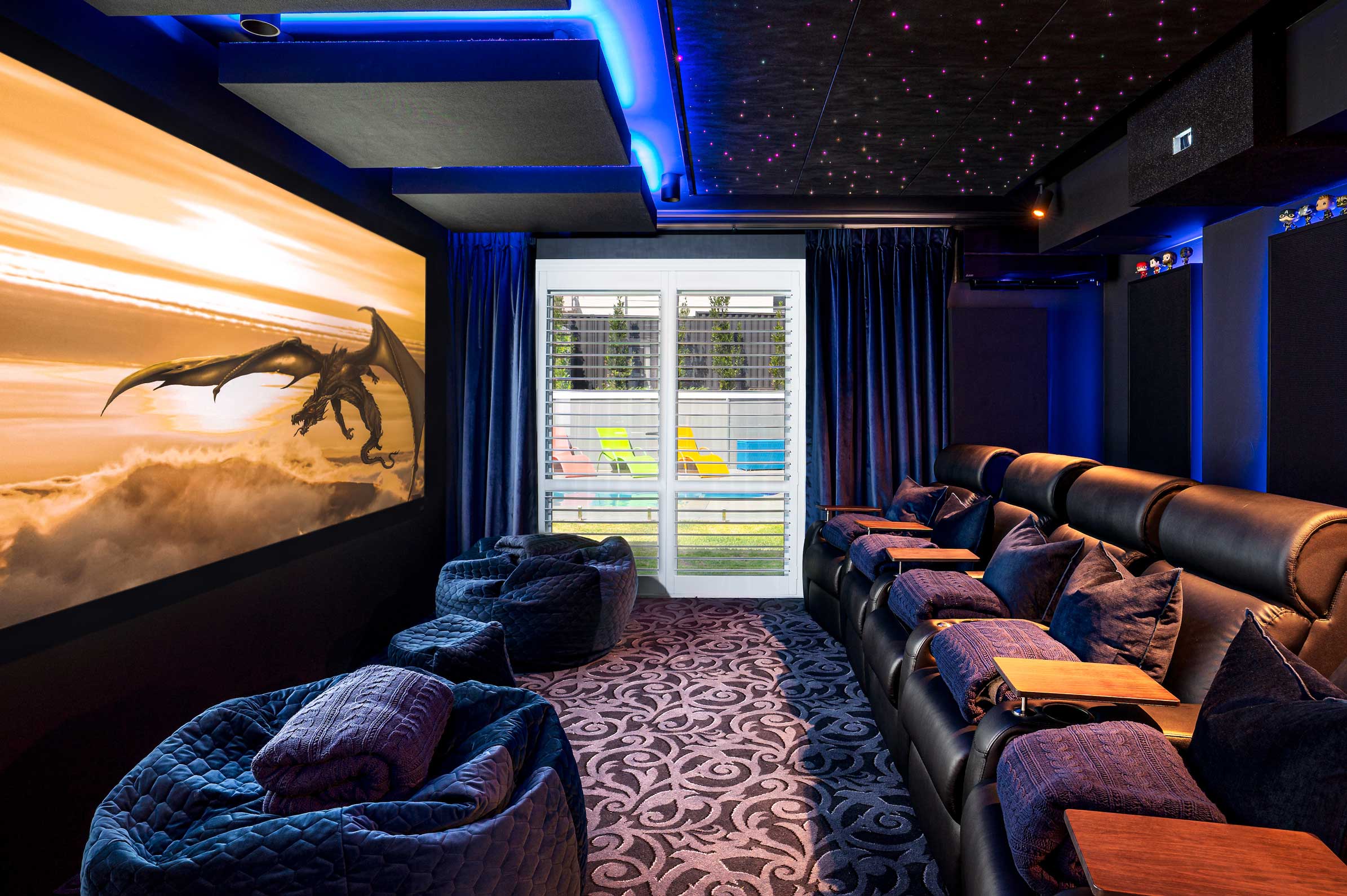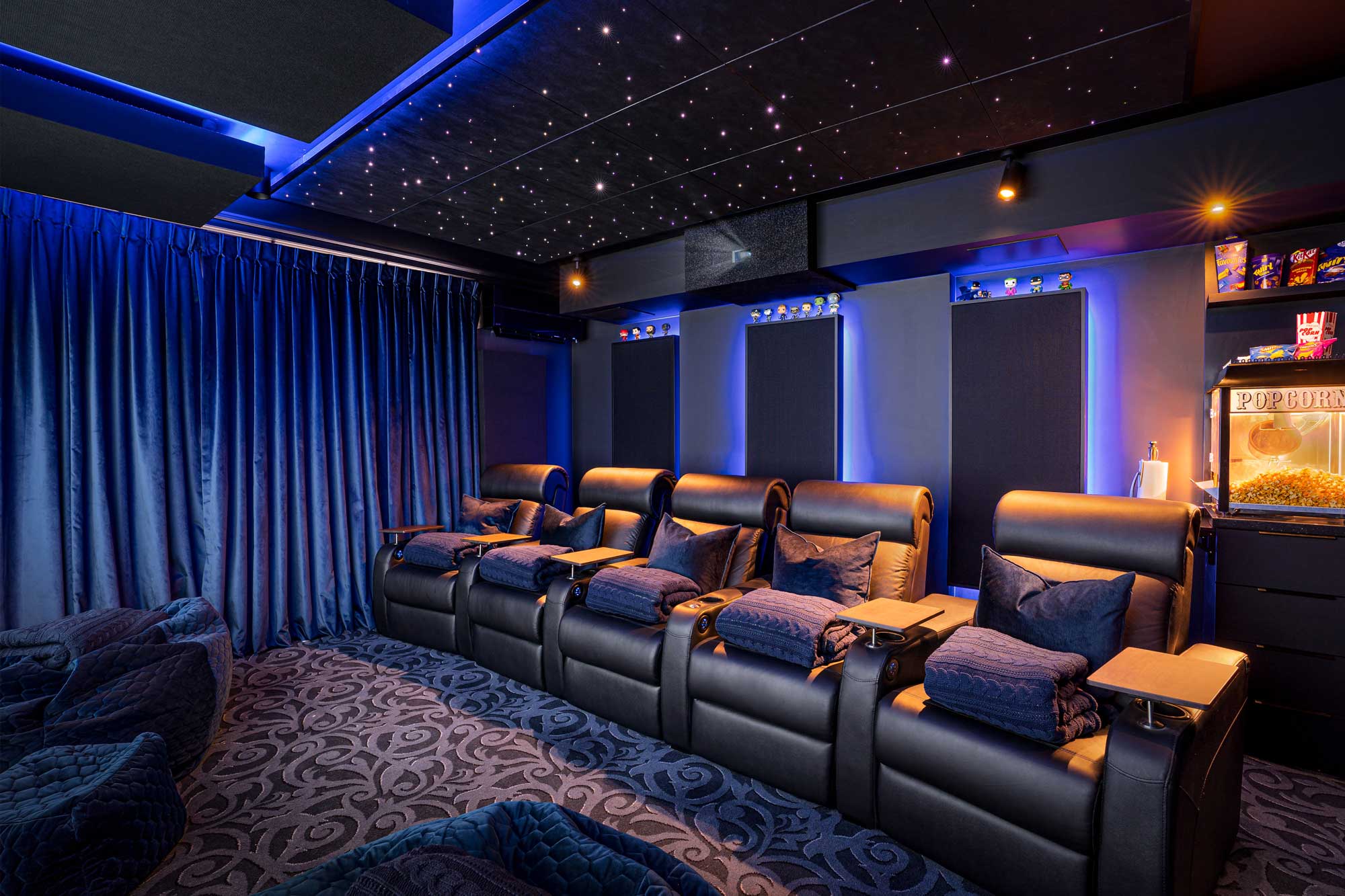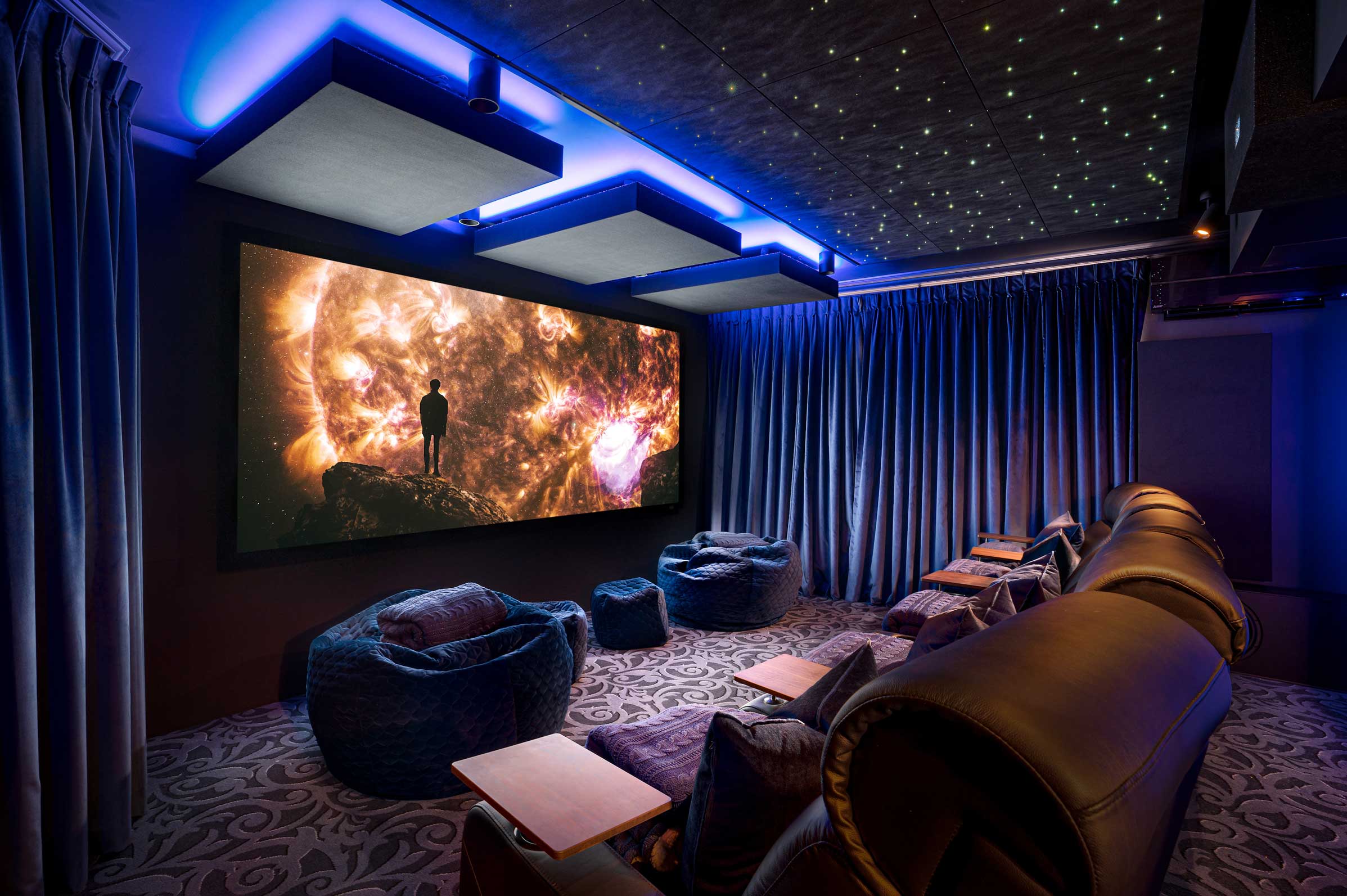Aussie home theatre rooms: Dining room ditched for movie magic!
This WA family cleared away the cutlery and invited Rogue Home Cinema to prepare an audio-visual feast instead
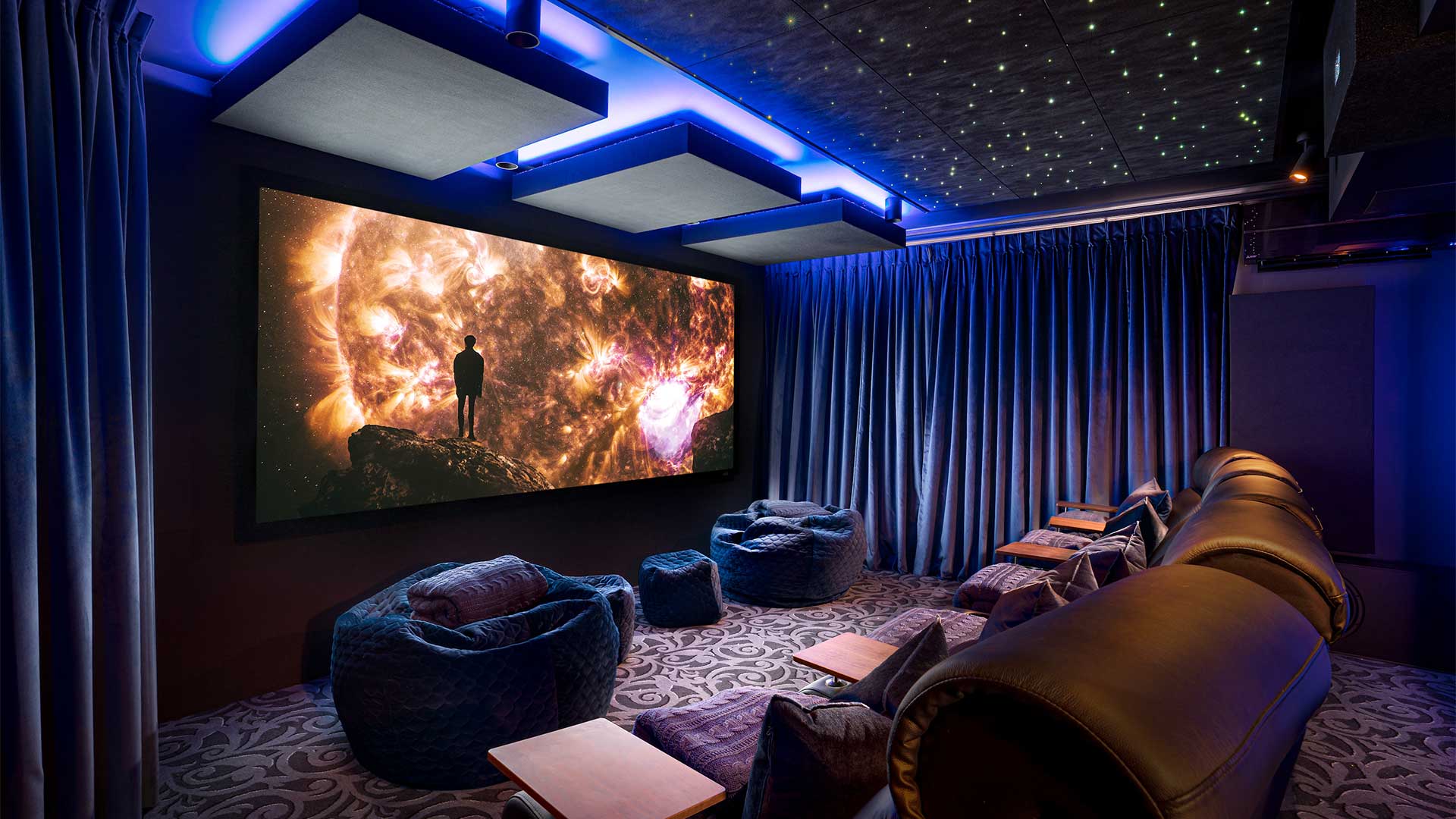
Does your home have a formal dining room? How often do you actually use it – even when you’re not in lockdown? The chances are that it’s only used a handful of times a year, which probably makes that room the most wasted space in your home.
That’s exactly what the owners of this Western Australian home had come to realise. They decided to change things, and set about transforming things to achieve more use from the space – and far more enjoyment – by dedicating it instead to the wonders of home entertainment.
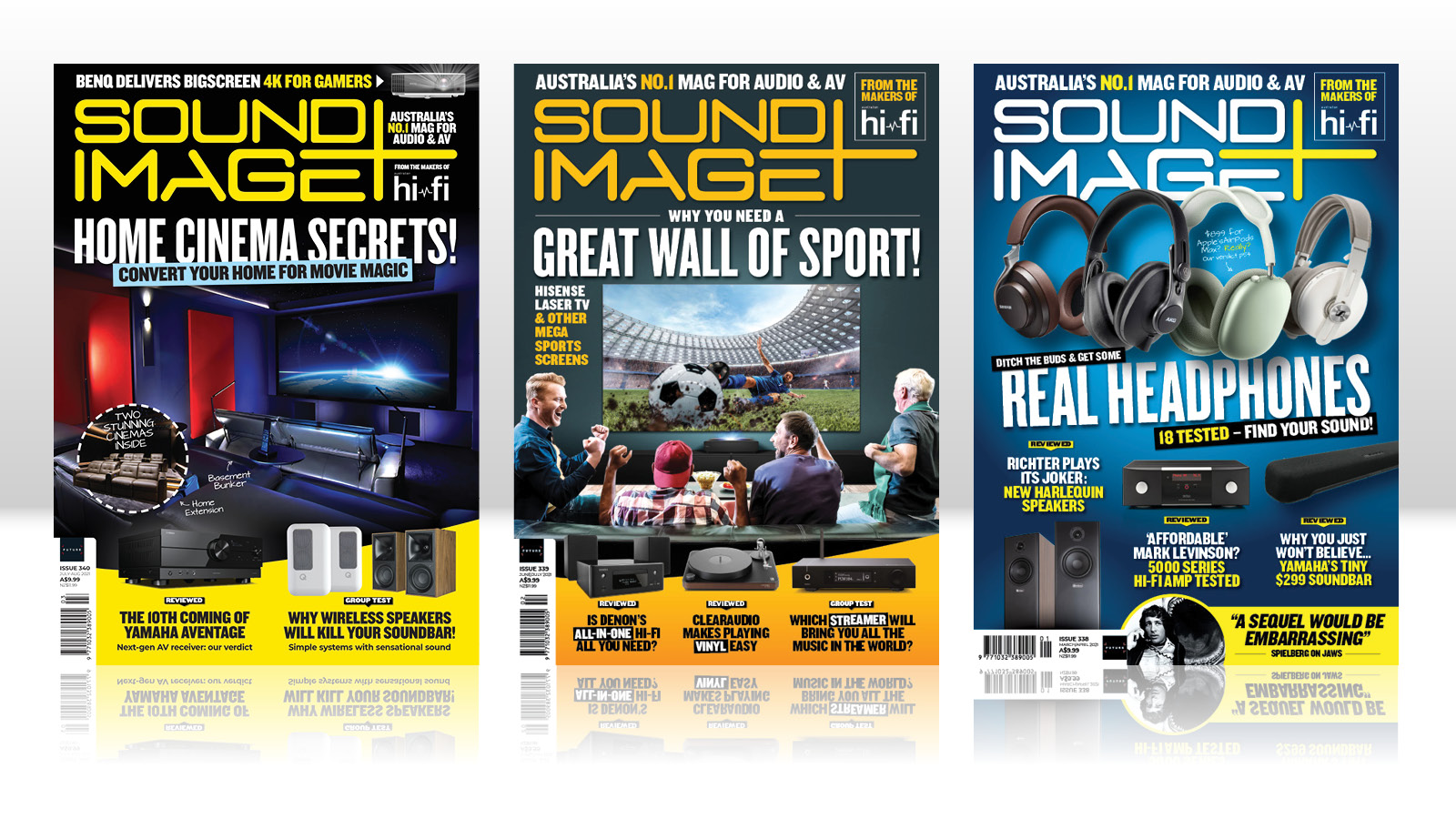
This feature originally appeared in Sound+Image magazine, one of What Hi-Fi?’s Australian sister publications. Click here for more information on Sound+Image, including digital editions and details on how you can subscribe.
“I really wanted to focus on the sound and the performance,” says homeowner Tony. “Angela, my wife, however, also wanted to make sure it looked good – like a cinema.” And to make sure both goals were simultaneously satisfied, they invited the team at Rogue Home Cinema to undertake the project.
“So the scope was to convert their existing formal dining room into a fun cinematic entertainment room,” says Rogue’s Scott Rogan. “Tony was clear that he wanted that great sound, and big bass. Back in the day he was an avid DVD collector, and he really wanted to reconnect with his passion for movies and collecting.
"But alongside this, Angela was keen that the space should have the right fit and flow to suit the rest of the house, as well as the right design – so some unique style, not too energetic, but certainly with some flow and intrigue.”
Room design
As the pictures show, the results speak for themselves in terms of room design. Not that there weren’t some fundamental decisions to be made and issues addressed, notably how to deal with some awkwardly-placed structural pillars along the width of the cinema.
“We were able to hide those behind the screen,” explains Scott. “A new false wall then balanced the room. Another challenge was the question of a possible bar space at the rear, or even a separate bar, but with the available space that would have meant flipping the room 90 degrees, disabling the doors to the outside area and adding a new entry at the back left – and that went against the idea of having a flow through the home between areas.”
The latest hi-fi, home cinema and tech news, reviews, buying advice and deals, direct to your inbox.
The chosen room solution instead uses curtains to provide complete visual isolation with no distractions from the outside world, while also maintaining an easy flow from internal hallways to the cinema and through to the outdoors, as was desired for everyday use. A custom bar cabinet was fitted in at the back left of the room, topped with a classic popcorn machine.
The five luxurious seats, meanwhile, are positioned in a single wide row.
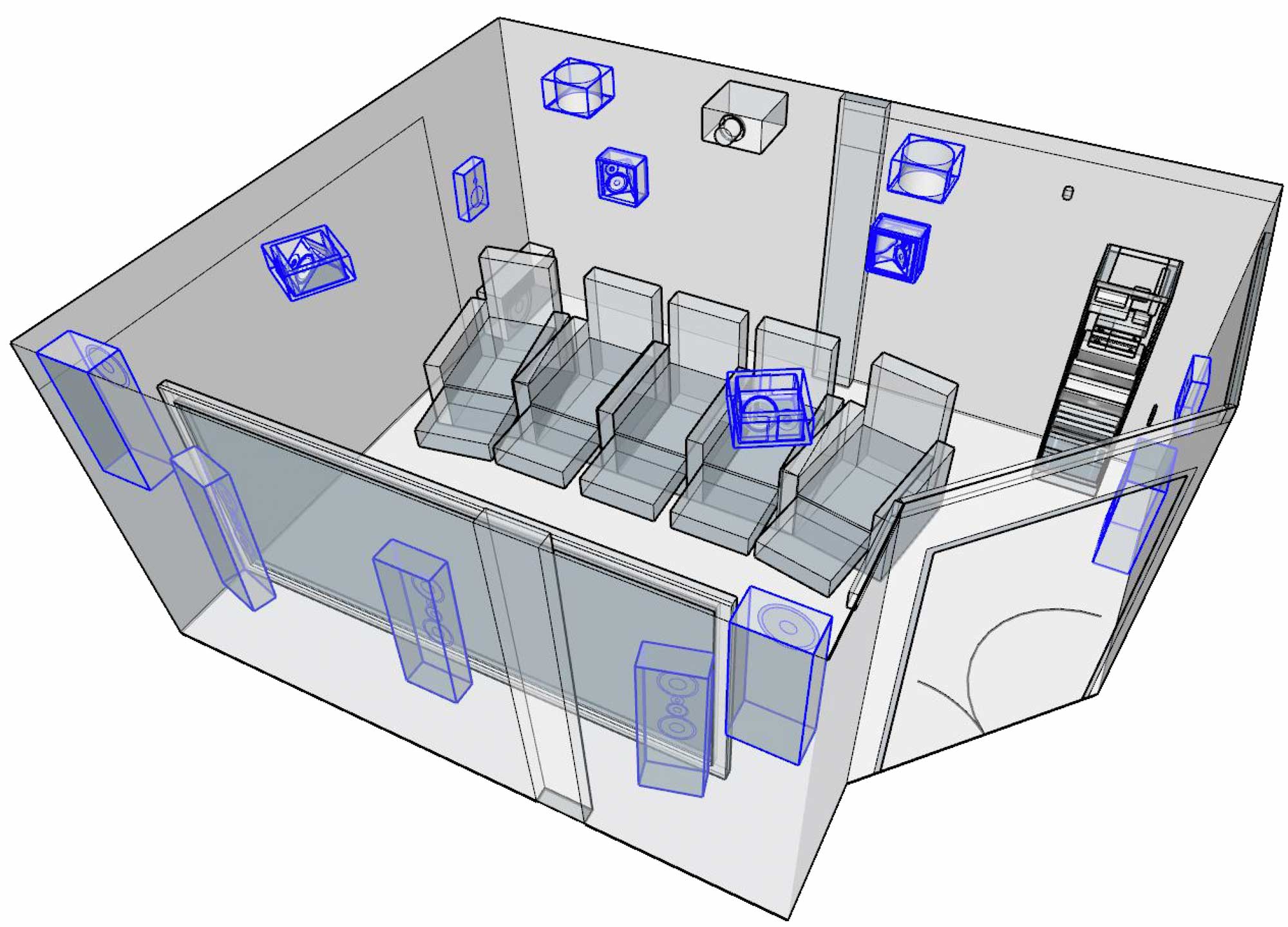
CAREFUL PLANNING: Rogue’s 2D and 3D diagrams show the speaker positioning on-wall, in-ceiling, and behind the 136-inch screen.
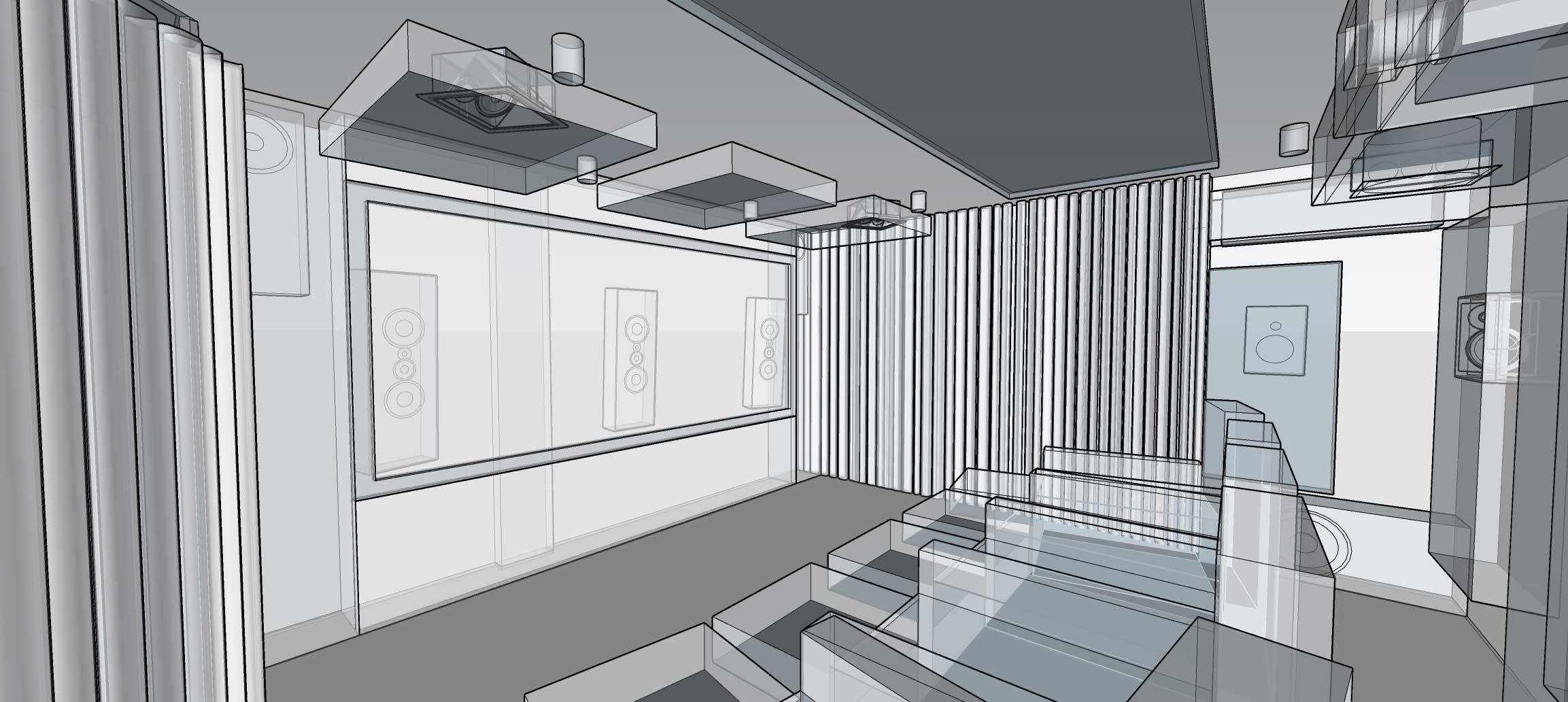
CAREFUL PLANNING: Rogue’s 2D and 3D diagrams show the speaker positioning on-wall, in-ceiling, and behind the 136-inch screen.
“Going wide kept a more uniform experience for both sound and picture compared to going deep with two rows of seating,” explains Scott. “With two rows there would be more disparity of picture and audio between the different seating positions. The wide approach also allows real immersion from the 136-inch-wide screen.”
There is still room within the depth of the home cinema for additional secondary seats. Bean bags are available for kids and friends during sleepovers, while bar stools can fit behind the main seats to allow three rows of audience for special occasions, such as major sporting events.
High-end image
For evidence of quality in the equipment realm of this home cinema you need look no further than the projector, which is the Sound+Image award-winning Barco Bragi CS. This is a seriously high-end projector which shares its optical engine with Barco’s still larger Balder projector, and uses a solid-state light source rather than a lamp, promising up to 50,000 hours of operation.
It’s smart, too, with auto-detection of resolution, aspect ratio and HDR being a major merit of this projector, while processing delays and latency are slashed by Barco’s use of a Single Step Processing chip for scaling, warping and pre-processing, which in rival designs usually take place in separate chips on separate circuit boards.
But outright quality was not the only reason for selecting the Barco projector.
“Most projectors would never fill a screen this size given the throw distance of this wide room,” explains Scott. “There’s only 3.5 metres throw distance, with the screen width almost the same at 3.2 metres. We did explore the room behind, to see if we could gain additional distance, but it was a tiled pool area and bathroom, so clearly that wasn’t possible.”
While no ordinary projector and lens system suited the requirements, the Bragi is available with six lens options, each for a specific throw range, including the ultra-wide option that was required for this job. Once the Bragi was fitted with Barco’s EN66 ultra-wide lens, the throw ratio was reduced down to 0.80-1.21 for 4K material, allowing the use of a 136-inch screen in this space. The selected Severtson screen is woven, and that allowed closer speaker installation of the Triad In-Wall Gold LCR speakers behind.
Sound performance
The rest of the speakers in the room are Triad in-wall, on-wall and ceiling models, plus four subwoofers – two Triad Silver subs at the rear, and two special-order Triad Gold on-wall subwoofers up front.
“During the initial discussions we’d spent time with the clients so that they were able to experience three different levels of AV system and several varieties of room fit-outs, and could become clear on the level of performance and build they were after”, Scott explains. “And this had made it clear that investing in quad subs and full 7.4.4 Atmos, together with the Barco CinemaScope projection, would deliver the performance they wanted both now and into the future.”
Sources available to the home cinema include a Panasonic 4K Blu-ray player, an AppleTV 4K media player and Foxtel 4K with a sports subscription. There’s also music available from the main automation controller, Control4’s EA-3. This useful rack-mount unit not only handles the automation and control of the system via either a room keypad or the slick Control4 Neeo remote (another Sound+Image award-winning product), it also provides a built-in music server which can play high-resolution audio from a local music library, from popular streaming music services, and from AirPlay-enabled devices.
The EA-3 offers an HDMI output but was here connected via coaxial digital — “it sounds better than HDMI,” notes Scott. The Control4 automation also allowed easy integration with the home’s existing Dynalite lighting systems and other feature lighting including StarFX Starlight ceiling panels, also the new Somfy motorised curtains, and of course operation of the entire cinema system.
The preamp and processor for the system is the Acurus Muse 16-channel processor, which natively decodes both Dolby Atmos and DTS:X and can handle a wide range of speaker layouts. Rogue has left two inputs free on the processor for later addition of a gaming console or any other future device. Thor surge-protecting smart power boards and Isotek power filters were also used on critical equipment.
The power to the Triad In-Wall Gold LCR front speakers is provided by Anthem’s three-channel MCA325, providing 400W per channel into the four-ohm impedance of the Triads. The rest of the speakers are Triad Silver SATs in various configurations, including in-ceiling models for the four Atmos height speakers, all powered by the 12-channel Parasound ZoneMaster 1250, some receiving higher ‘bridged’ power.
“The back effect channels are almost half the distance from the listening positions compared with the front channels,” notes Scott from Rogue, “so the ZM1250 allowed the perfect power allocation for each area.”
The final dose of power is for the passive Triad subwoofers, with each sub having a dedicated Triad RackAmp 700 in the rear rack beside the bar and popcorn area, these slim units combining DSP with 700W of Class-D performance for each unit.
Final touches
While that’s a lot of tech, simple operation through Control4 was an essential element of the system design. It allows clever use of the lighting, too.
“The feature lights can change colour throughout the room,” says Scott. “We actually asked the lady of the house if we could surprise her hubby by using the colours of his favourite football team. But there are three boys in the family, and each of them supports a different team! So we set up four different colour schemes to cover them all.”
Meanwhile the family is delighted with the new level of entertainment available to the home. Tony’s DVD collection has evolved into an epic UHD Blu-ray collection – “90% of their movies are watched via UHD disc, for optimal performance” says Scott. “And the live AFL from Fox Sports is outstanding as well.”
He tells us the room is used by the whole family for more than 20 hours a week, and they’re already thinking of how they might go bigger in their next home.
“Scott really understood what sound and sight I was looking for,” attest Tony and Angela. “He really does know his stuff, and is very passionate about cinema. The team delivered a great home cinema that looks and sounds awesome, and is very easy to use. No regrets whatsoever – we’re so glad we did it.”
Equipment list
- Barco Bragi CS projector
- Barco EN66 ultra-wide lens
- Severtson SAT4K 136-inch woven screen
- Panasonic DP-UB9000 4K Blu-ray player
- AppleTV 4K
- Foxtel 4K
- Control4 EA3 automation controller/streamer
- Acurus Muse 16-channel processor
- Anthem MCA325 power amplifier (LCR)
- Triad IW Gold speakers x 3 (LCR)
- Parasound ZoneMaster 1250 12-ch power amplifier
- Triad Silver SAT surround/effects speakers x 8
- Triad RackAmp 700 x 4 (subwoofers)
- Triad OW-Gold subwoofers x 2
- Triad OW-Silver subwoofers x 2
- Thor smart board / surge protection
- Isotek EVO3 Aquarius power filters
- Packedge networking
- Control4 lighting x 4 channels
- DMX feature lights x 42 channels
- StarFX starlights
- Unios Apex Dusk downlights
- Manhattan New Yorker Pro seating
- Control4 EA3 controller
- Control4 Neeo remote
- Control4 keypad
- Somfy motorised curtains
- Dynalite primary lights (existing house system)
- SnapAV equipment rack
Sound+Image is Australia's no.1 mag for audio & AV – sister magazine to Australian Hi-Fi and to the UK's What Hi-Fi?, and bestower of the annual Sound+Image Awards, which since 1989 have recognised the year's best hi-fi and home cinema products and installations. While Sound+Image lives here online as part of our group, our true nature is best revealed in the print magazines and digital issues, which curate unique collections of content each issue under the Editorship of Jez Ford, in a celebration of the joys that real hi-fi and high-quality AV can bring. Enjoy essential reviews of the most exciting new gear, features on Australia's best home cinemas, advice on how to find your sound, and our full Buying Guide based on all our current and past award-winners, all wrapped up with the latest news and editorial ponderings. Click here for more information about Sound+Image, including links to buy individual digital editions and details on how best to subscribe.
